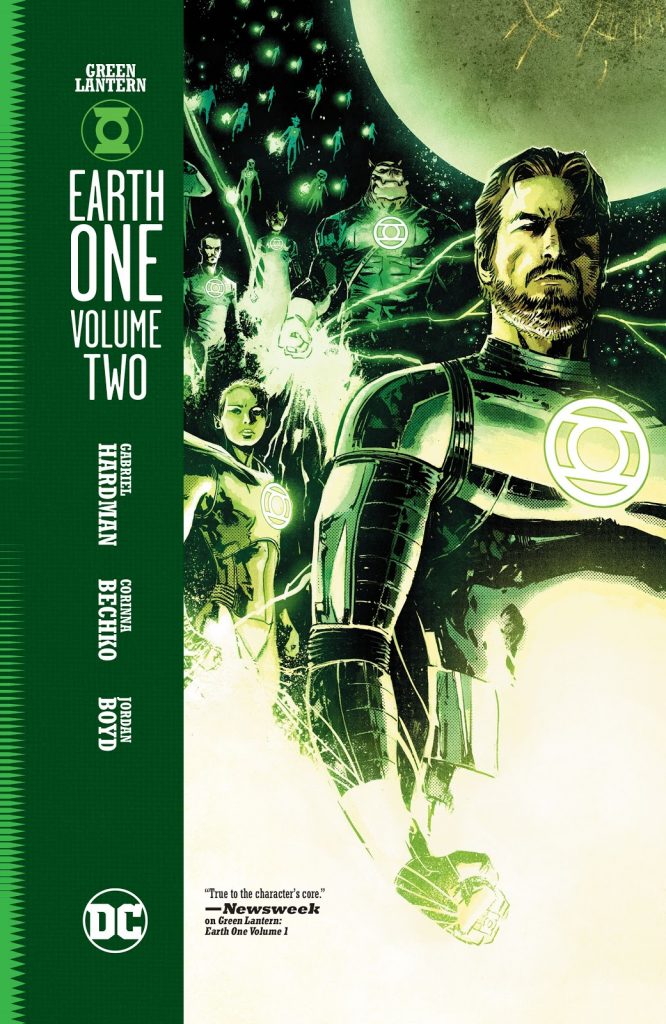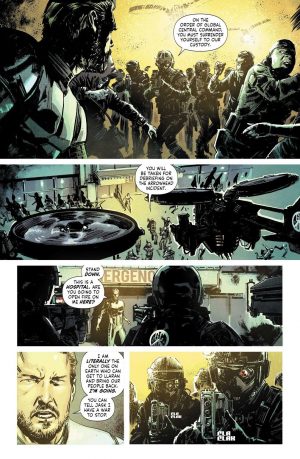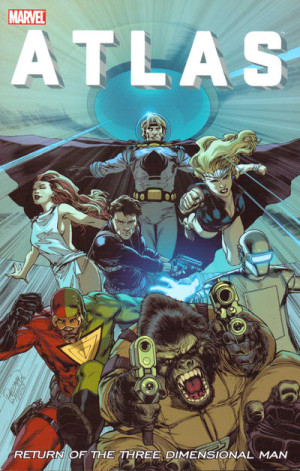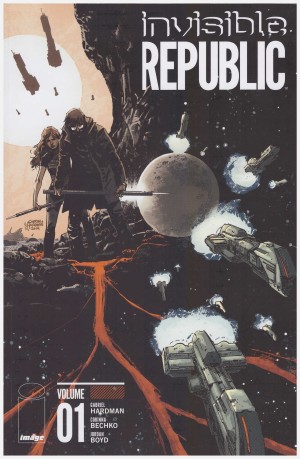Review by Ian Keogh
The opening volume of Green Lantern: Earth One was a triumph, but if the books are only going to come out every two years perhaps some form of synopsis would be advisable for those with shorter memories. This is Hal Jordan as Green Lantern, but in an alternate world with a ring more randomly acquired than was the case in his late 1950s introduction in the mainstream continuity. The first volume ended up with him back on Earth where an authoritarian government was dealing with any opposition, and Hal noting he now had the tools to fight back.
Instead of picking up there, this sequel opens three years after what’s noted as the battle for Earth, with an engineer named John Stewart among a party making first contact with the Llaran race. It goes about as wrong as it can, as it becomes apparent someone has a vested interest in beginning a war, and that may even be Earth’s administrators Centcom. Co-plotters Corinna Bechko and Gabriel Hardman hinted at much during the ending to the first volume, and the first of those hints to come to fruition is the introduction of the Yellow Lanterns. We know them to the be the creation of a renegade guardian, but that’s not information the Green Lanterns have.
What made the opening volume so good was that it was a different take on Green Lantern. He’s always represented the bright future in the DC universe, but this version was a grubby, tarnished environment in which Hal was as downbeat as his surroundings. This sequel still has the grubbiness thanks to Hardman’s glorious art, but it’s an altogether more traditional Green Lantern story that could have been a Geoff Johns era epic. That might not meet expectations, which isn’t a bad thing in itself, but it’s let down by too many obvious choices, too many conversations directed at the reader rather than the listeners, and not enough originality. The best moments are all small cogs in the bigger picture: the revelation of corruption, a memorable cameo for a feeding alien race, and the effective cultivation of terror during the opening scene when it all starts to go wrong.
Hardman’s art raises a struggling story to average, but instead of building on the promise of the first volume, this almost squanders it.





